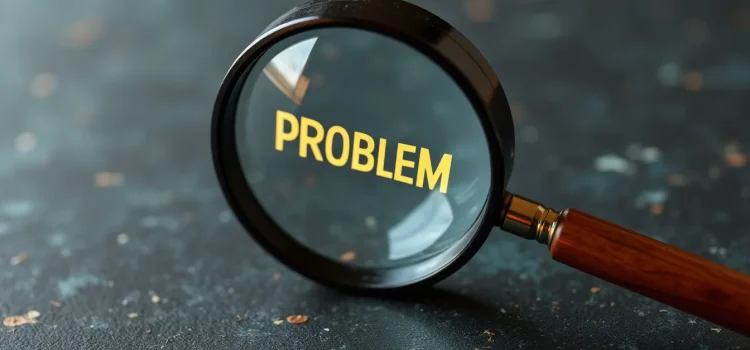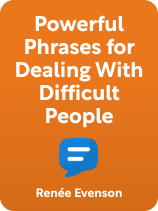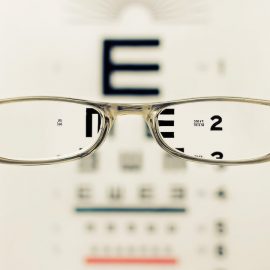

This article is an excerpt from the Shortform book guide to "Powerful Phrases for Dealing With Difficult People" by Renee Evenson. Shortform has the world's best summaries and analyses of books you should be reading.
Like this article? Sign up for a free trial here.
Have you ever found yourself in a heated argument, unsure of what the real issue is? How can you effectively clarify the problem when emotions are running high?
In Powerful Phrases for Dealing with Difficult People, Renée Evenson offers strategies to navigate conflicts. She emphasizes the importance of understanding both perspectives and agreeing on the core issue before seeking solutions.
Read more to learn how to clarify the problem in a way that prevents misunderstandings and promotes effective problem-solving.
Clarify the Problem at Hand
According to Evenson, once you clearly understand both sides of the conflict, it’s time to clarify the problem at the heart of the conflict. It’s impossible to brainstorm solutions until you agree on what you’re trying to resolve. To do this, restate the problem from your point of view and ask the other person to do the same. If you’re not on the same page, return to Stage #2 and ask questions to better understand their perspective.
For example, imagine you’re a manager who’s recently equipped your team with a new project management software. However, one of your workers repeatedly fails to update the status of their tasks on this software. You tell them that you assume the issue is that they don’t have the time to learn the software. However, the worker explains that they think the real problem is that the spreadsheet-based system the team used before was more effective than this new software. Thus, you realize there’s a gap in your understanding and return to Stage #2, asking why the worker believes the old system was better.
| Beware of Different Interpretations of the Same Events Clarifying the problem at hand is important because it’s easy for two people to arrive at wildly different understandings of a situation, even if they both witnessed it firsthand. In Difficult Conversations, Douglas Stone, Bruce Patton, and Sheila Heen explain that this is because people tend to pay attention to and retain only an incomplete part of what happens to them. Then, they interpret that information in a unique way based on their past experiences. For instance, in the example above, you (the manager) and the worker might have both witnessed a co-worker struggle to use the new project management software. You notice that the co-worker is learning the program through trial and error and interpret that to mean that they believe the program is valuable enough to spend time learning (drawing from your past experiences of learning new technologies that made your life much easier). In contrast, the worker who dislikes the software notices that their co-worker seems annoyed while learning the program, interpreting this to mean that they, too, think the program has an unintuitive design (drawing from their past experiences with unnecessary, unintuitive tech upgrades). |
If They Refuse to Budge, Apologize
Evenson notes that, if the other person clings to their point of view and stubbornly refuses to consider any other way of seeing the issue, it may help for you to offer a heartfelt apology. By apologizing, you show deference to the other person and appeal to their sense of empathy, transforming the tone of a conversation. An apology can disarm hostility and defensiveness, lessen ego on both sides, and move a stuck dialogue forward.
Evenson clarifies that apologizing doesn’t necessarily mean admitting that you’re at fault. Instead, it just means that you’re willing to take responsibility for finding a solution and repairing the damaged relationship, if necessary.
You can apologize for any number of things, as long as it’s genuine and relevant to the conflict. For instance, you might say something like “I’d like to apologize for not realizing sooner that you felt so left out,” or “Sorry for bringing up this awkward issue, but I think we need to sort it out.”
| Don’t Apologize Too Much Although apologizing can help disarm defensiveness and move a dialogue forward, don’t apologize too much. Studies show that excessive apologies make you appear less self-assured and less competent. Additionally, even if apologizing isn’t the same as admitting that a problem was your fault (as Evenson states), research shows that it still makes others more likely to believe that you’re at fault. Although Evenson recommends apologizing for anything relevant to the conflict, some experts contend that there are certain things you just shouldn’t apologize for. For instance, never apologize for asking follow-up questions when people are unclear or for sharing opinions that other people disagree with—these are integral parts of productive, collaborative work. |

———End of Preview———
Like what you just read? Read the rest of the world's best book summary and analysis of Renee Evenson's "Powerful Phrases for Dealing With Difficult People" at Shortform.
Here's what you'll find in our full Powerful Phrases for Dealing With Difficult People summary:
- The downsides of avoiding conflict
- How to keep people from getting defensive
- What to do before you attempt conflict resolution






